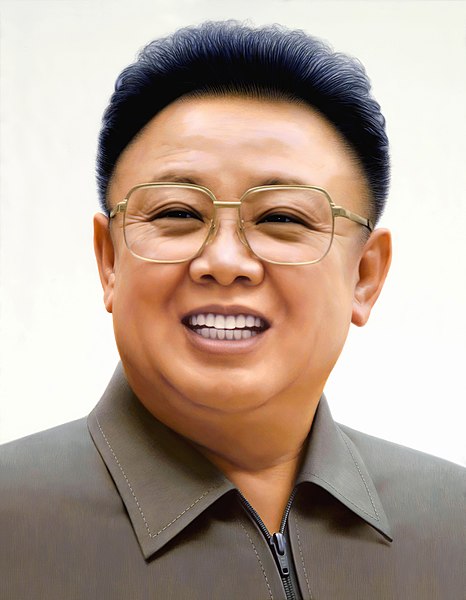This is a concise answer I found online, but it only confuses me more.
“Because profit can only come from human labour, as more and more capitalists invest in the new machinery the average labour time required to produce each commodity falls. This is what makes the rate of profit fall, as the ratio of surplus value to investment falls across the whole system.”
My understanding of this paragraph is that as machines play more and more a role in production less human labor is needed to produce the commodity, but I dont get how that lowers profit. My first thought it, don’t machines allow more money to be made? As capitalism develops we are reaching a point where 90%+ jobs in some industries will be replaced by machines, needing less people and less overall investment for the profits you’re getting. The entire reason is that it makes more profits right? Employers at least in the US save a ton just from not needing to pay for employees healthcare and other benefits, there are a lot of incentives in replacing people with machines.
I am sure these questions sound totally moronic to you comrades who have read capital volume three, but I hope you can see where I’m coming from and let me know what I’m getting wrong. I would really like to understand this, but it’s pretty intimidating to get into and wrap my head around some of this stuff. Thanks guys.
It’s about mass production basically. The more automated a productive process becomes, the cheaper the individual pieces become. In a competitive economy, it lowers the barriers to production for others, too. Where you once needed certain skills or knowledge to enter a market, now it just takes capital.
Look at 3d printing for example. Once this technology develops enough, it will reduce the labor necessary for production of a lot of things. If more and more people get the home versions of them and start printing all their dishes and tableware, it’ll make the profit anyone’s able to achieve selling dishes lower.
The less labor necessary to make bowls, the less value they have because they’re more accessible.
Take that on a macro scale, and where once they needed to get metal parts from a whole different company, soon they’ll just have metal 3d printers at the beginning of their assembly line. They can make even more products because it’s so much cheaper and faster. They’re competitors can, too, though. So now everyone’s making more and your products are worth less. This is a big reason capitalism has monopolization as a key feature. Because the products are worth less, you have to sell more to make the same profit, making it harder to stay in business.
Liberals like to talk about supply and demand when it comes to trade value, but they leave out that it proves the labor theory of value. They don’t talk about how every innovation that’s lead to greater supply is an innovation that’s reduced the necessary labor to make that supply. They also don’t talk about how demand is relatively stable because that might make people think a planned economy could work instead of their chaotic market economy.
Firstly it is important to note that machines cannot create value. Only labor can do that. Here we don’t speak of the price which is better understood as momentary exchange value. The exchange value of a commodity at any given time can fluctuate around the real value, the latter being determined by the average socially necessary labor to produce said commodity, but it will never in the long run permanently diverge from it.
Now that we have established how value is created we realize that investment in machinery that replaces labor is bound to - in the long run, as that machinery becomes generally adopted by all producers - create a fall in the value of commodities produced with said machinery. In the short term this or that individual capitalist may increase their profits but competition means that any such advantage can only be temporary.
As time goes on an equivalent increase in profit will necessitate more and more investment into new machinery. In order to keep rates of profit (that is the ratio of profit to investment) high the capitalist is forced to depress wages, cut costs everywhere they can thus worsening labor conditions, or otherwise manage to acquire the raw materials they need at below cost, e.g. by colonization, theft and exploitation derived from imperialism.
None of this is sustainable and is one of the primary causes for the inevitable, cyclical and ever worsening crises of capitalism.
In case the explanation i gave in my other comment is unclear or insufficient, here is how this (Trotskyist) website explains it:
https://socialistworker.co.uk/socialist-review-archive/what-tendency-rate-profit-fall/
"The first capitalist who invests in new machinery can make large amounts of profit because initially they undercut other capitalists.
But as every capitalist starts to buy the new machines the first capitalist loses this advantage.
On the face of it this can seem very beneficial […] But commodities don’t only embody constant and variable capital. They also embody the surplus value that the capitalist can only extract from workers.
[…] Because profit can only come from human labour, as more and more capitalists invest in the new machinery the average labour time required to produce each commodity falls. This is what makes the rate of profit fall, as the ratio of surplus value to investment falls across the whole system."
Some good answers already. I’ll just add that it may help to remember that value is a reflection of the socially necessary labour time embodied in a commodity.
As technology decreases production time, it takes less socially necessary labour time to produce any given commodity, which means that commodities come to embody less and less value.
Generally, the less value in a commodity, the lower it’s price (although value =/= price).
Capitalists have some power to protect themselves against falling prices (i.e. the tendency for the rate of profit to fall). We’re seeing this now across the world with price increases. They just call it inflation and blame it on war. (It may have been on here, but I saw last week that 100 years ago, the return for $1 invested in fossil fuels was something like $100; today it’s closer to $1:$1 or $1:$4.) Or they outsource work to lower wages. As well as stealing resources to get them cheaper than their market rate, as @cfgaussian said.
Edit: edited for clarity
Somewhat simplistic explanation, just to illustrate what some comrades have already said:
Let A = raw materials, B = machinery,productive infrastructure, and C = labor.
Then A+B+C = D, the overall cost of a product.
Capitalism is production organized for the sake of profit. Thus, for production to happen in the first place, the capitalist has to take surplus value from A, B, or C. Because he has relatively little control over the cost of raw materials, he cannot take it from A. Similarly, he cannot take from B, because the cost of running the machinery is a given. So he can only take it from C, and he does so by paying the worker less than the value of his labor. Call value withheld x; then the wage the worker receives is C-x.
Under capitalism, labor is a liability, a cost to be reduced as much as possible. Thus, as the means of production advance (a natural consequence of scientific/technological discoveries), the capitalist uses it as an excuse to shrink labor, or simply to decrease the amount of labor expended. Thus, as technology advances, C decreases. But as C decreases, x (which is taken from C) also decreases. Thus the rate of profit will fall, and the economy will stagnate.
As you say less socially necessary labour time is required for production (this means lower unit price!) But as labour costs tend to equal the minimum a capitalist can provide to ensure reproduction of labour, the ratio of surplus value to capital investment falls, or the rate of profit falls.
In your example the bigger/newer machines may generate more output with less labour but what I think you are missing is that once this technology is general the output will be at lower unit cost price so the ratio of profit to capital investment will still fall (as the only source of surplus value is labour power).
It is important to note that the TRPF is a social and historical trend but that there are many countervailing trends under capitalism e.g. monopoly price fixing.
Is surplus value the same as profit? My understanding is surplus value is the value extracted from workers, while profit is just the money the business made past the costs.
Is the falling rate of profit a cycle of sorts that leads to crisis? Like profits boom with the invention of the cotton gin for example but then fall over time as profit stabilizes with reduced price, but then when there is another major breakthrough like the internet profits boom again? Sorry for the basic boring questions comrade!
You are correct on surplus value and profit. The TRPF is a long term historic trend (with countervailing effects) not a cycle.


